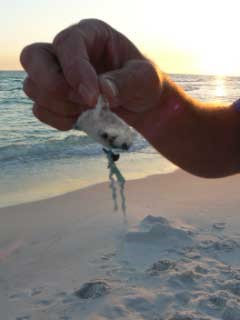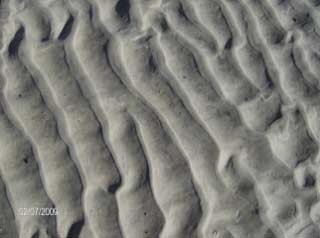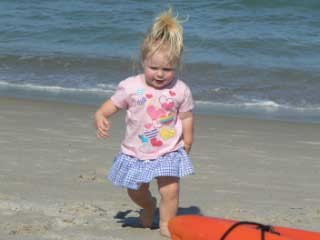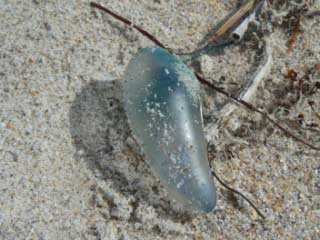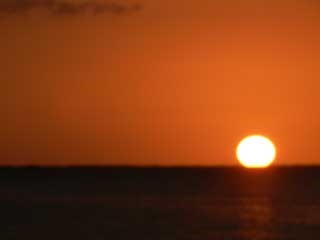Oceans and seas are a major part in our lives, without them
the world would be entirely different. I personally find the ocean an amazing
place full of mysteries and mysterious things! Enjoy this
article about the captivating things about and in them.
Author: Naomi Smith
1/17/14
Oceans and seas cover 71% of the world. There is so
much water on earth that it could cover the moon 9 times at a depth of 2 ½
miles! All the water on this world combined has more salt then fresh water.
1/10 of 1% (0.017%) of water found on earth is fresh; the other 97% is salt.
much water on earth that it could cover the moon 9 times at a depth of 2 ½
miles! All the water on this world combined has more salt then fresh water.
1/10 of 1% (0.017%) of water found on earth is fresh; the other 97% is salt.
Water is harder to explore then space! The waters weight is
so heavy that, if the submarine or robot going under water is not built strong
enough, it would be crushed. The ocean is a very unknown place because of this.
so heavy that, if the submarine or robot going under water is not built strong
enough, it would be crushed. The ocean is a very unknown place because of this.
Who knows what could live in there? Just think of all the
crazy looking creatures that live in the depths of the sea that are already
found, like the anglerfish, colossal squid, gigantactus, gulper eel, and
lantern fish to name a few.
crazy looking creatures that live in the depths of the sea that are already
found, like the anglerfish, colossal squid, gigantactus, gulper eel, and
lantern fish to name a few.
The Oceans Sections
The ocean has different levels, 4 to be exact.
The Continental Shelf
The Continental Slope
The Continental Rise
The Abyssal Plain
The Continental Shelf
The Continental Shelf is the flat land in the beginnings of
oceans and seas. It usually last a few 10’s of miles out into the ocean or sea.
Its width can vary with the different places. For
oceans and seas. It usually last a few 10’s of miles out into the ocean or sea.
Its width can vary with the different places. For
example, in some areas the
shelf only last for 1 mile in others, like in the Pacific, the shelf can last
for 750 miles!
The Continental Slope
The Continental Slope is the drop off after the shelf. It
drops 660 feet to 2 ¼ miles (200 m to 3.6 k) in depth.
drops 660 feet to 2 ¼ miles (200 m to 3.6 k) in depth.
The Continental Rise
The Continental Rise is the last stage before the Abyssal
Plain (The Deep Sea). It is a rise in the land before the transition of the
stages of the ocean.
Plain (The Deep Sea). It is a rise in the land before the transition of the
stages of the ocean.
The Abyssal Plain
The Abyssal Plain is the Deep Sea. This is where all the
crazy looking animals live. It is flatter down there than any one has ever seen
on land. Due to there being hardly any “wind” down there the jagged rocks, stay
jagged, where jagged rocks closer to the surface would smooth out due to the
wind making currents, and waves.
crazy looking animals live. It is flatter down there than any one has ever seen
on land. Due to there being hardly any “wind” down there the jagged rocks, stay
jagged, where jagged rocks closer to the surface would smooth out due to the
wind making currents, and waves.
There are also volcanoes down there.
In 1993 some oceanographers found a close gathering of
active volcanoes along the bottom of the South Pacific sea floor. Some have
the potential to erupt.
active volcanoes along the bottom of the South Pacific sea floor. Some have
the potential to erupt.
Ocean Temperatures
The surface of the ocean water really depends on the
day, place, and time. The temperature at the bottom remains 35 to 37 degrees.
day, place, and time. The temperature at the bottom remains 35 to 37 degrees.
Sea Salt
My Dad and brothers would love this section; you see
they put salt on EVERYTHING! I’ve had to tell my little 9-year-old brother to
“Take it easy on the salt!” Well, you probably know that the ocean is where we
get most of our salt.
they put salt on EVERYTHING! I’ve had to tell my little 9-year-old brother to
“Take it easy on the salt!” Well, you probably know that the ocean is where we
get most of our salt.
Here are some interesting facts-
1. If all
water was evaporated, 46 quadrillion tons of salt would be left!
water was evaporated, 46 quadrillion tons of salt would be left!
2. All the salt in the
world is enough to cover all 7 continents with almost 420ft of salt.
world is enough to cover all 7 continents with almost 420ft of salt.
3. Centuries ago salt was
worth as much as gold, ounce for ounce.
worth as much as gold, ounce for ounce.
4. In China there
were salt coins at one point.
were salt coins at one point.
5. Many of the first
Egyptian and Spanish roads were made for carrying salt.
Egyptian and Spanish roads were made for carrying salt.
6. The cities Venice and
Pisa developed due to the salt trade.
Pisa developed due to the salt trade.
7. Every 1,000
grams of ocean water has 35 grams of salt in it.
grams of ocean water has 35 grams of salt in it.
Some ways that salt is getting in to the sea right now is by
rocks. The minerals that are in the rocks come out when they are in water
after a small period of time, when they are mixed with chemicals, or because of
volcanic eruptions. The ocean is getting saltier every day.
rocks. The minerals that are in the rocks come out when they are in water
after a small period of time, when they are mixed with chemicals, or because of
volcanic eruptions. The ocean is getting saltier every day.
If you ever got stuck out in sea, you would want a bunch of
water with you. The last thing that you want to do when stuck is drink sea
water. If you drink salt water, over multiple days or weeks, you would get
dehydrated.
water with you. The last thing that you want to do when stuck is drink sea
water. If you drink salt water, over multiple days or weeks, you would get
dehydrated.
Now, how do animals survive at sea with all the salt in the
water? Special filters in their body filter out the salt to make it where they
can drink the water without hurting themselves.
water? Special filters in their body filter out the salt to make it where they
can drink the water without hurting themselves.
People get salt out of the sea by water evaporation ponds.
They are all over the place; one is at Great Salt Lake, Utah, China, Japan,
India, Japan, and France. Evaporation Ponds are manmade.
They are all over the place; one is at Great Salt Lake, Utah, China, Japan,
India, Japan, and France. Evaporation Ponds are manmade.
Water
Water is essential for human life. That is why scientists have tried to find different ways to
get fresh water.
get fresh water.
One was the evaporation ponds, as mentioned above, and
another was to pull huge icebergs up from Antarctica by tug boats. The plan was
to bring them from Antarctica to Los Angeles to supply water for the city. The
icebergs would be 10-mile (16 km) long. Though the iceberg would lose
half its size by the time it reached Los Angeles, it would still provide 300
billion gallons (1.2 trillion 1) of water, 1 month worth, for the city.
another was to pull huge icebergs up from Antarctica by tug boats. The plan was
to bring them from Antarctica to Los Angeles to supply water for the city. The
icebergs would be 10-mile (16 km) long. Though the iceberg would lose
half its size by the time it reached Los Angeles, it would still provide 300
billion gallons (1.2 trillion 1) of water, 1 month worth, for the city.
The plan was canceled because of the danger. It is
very easy to run into icebergs in the ocean down there because huge icebergs
will be unseen under water with just the sharp tip pointing out. This is how
the Titanic ship sunk on its first trip by hitting on the tip of an undersea
iceberg.
very easy to run into icebergs in the ocean down there because huge icebergs
will be unseen under water with just the sharp tip pointing out. This is how
the Titanic ship sunk on its first trip by hitting on the tip of an undersea
iceberg.
Water is broken up into different sections; four to be
exact.
exact.
Pacific Ocean
Atlantic Ocean
Indian Ocean
Arctic Ocean
Then there are, of course, all the smaller seas,
rivers, lakes, and streams.
rivers, lakes, and streams.
In the “old days” there were the 7 seas. Why it was the seven seas was because there
were only seven seas that where navigable. They were-
were only seven seas that where navigable. They were-
The Gulf of Mexico
The Caribbean Sea
Mediterranean Sea
Pacific Ocean
Atlantic Ocean
Indian Ocean
Arctic Ocean
Ice Bergs and
Glaciers
Glaciers
Icebergs and Glaciers are found in the Arctic and Antarctic.
They are very dangerous to boats because usually 90% of it is under the water,
making it easy to hit the bottom of the boat.
The most dangerous time for ships to go to either place is the month of
April. When icebergs are on the move, they travel 4-10 miles a day.
When an iceberg gets into the Gulf Stream it begins to melt rapidly, the gulf
steam can melt a 150,000- ton iceberg.
They are very dangerous to boats because usually 90% of it is under the water,
making it easy to hit the bottom of the boat.
The most dangerous time for ships to go to either place is the month of
April. When icebergs are on the move, they travel 4-10 miles a day.
When an iceberg gets into the Gulf Stream it begins to melt rapidly, the gulf
steam can melt a 150,000- ton iceberg.
With nothing to support the ice, big junks will break off
the ice. They can be 20 miles long and weigh over 990,000 tons. Northern
Hemisphere icebergs are more dangerous than Southern Hemisphere icebergs.
the ice. They can be 20 miles long and weigh over 990,000 tons. Northern
Hemisphere icebergs are more dangerous than Southern Hemisphere icebergs.
Because of these dangerous icebergs, International Ice
Patrol and Coast Guard keep constant watch on ice berg areas with ice patrol
boats. They patrol the Atlantic and the Arctic. This group was started in
the year of 1914. They were started because of the sinking of the Titanic.
Patrol and Coast Guard keep constant watch on ice berg areas with ice patrol
boats. They patrol the Atlantic and the Arctic. This group was started in
the year of 1914. They were started because of the sinking of the Titanic.
Glaciers melt rather slowly, over centuries actually. When
they are melting, they create crevasses and other notable features. Glaciers
can only be made in certain places such as high places in East Africa, the Himilaya’s, and Mexico, to name a few.
they are melting, they create crevasses and other notable features. Glaciers
can only be made in certain places such as high places in East Africa, the Himilaya’s, and Mexico, to name a few.



